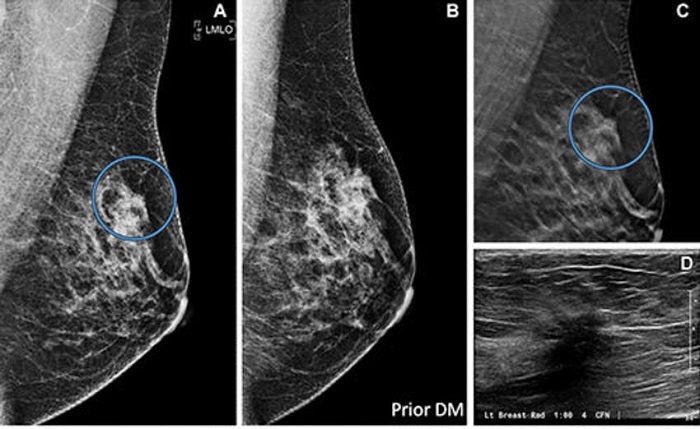Advanced 3D Mammography Detects More Breast Cancers
Posted on 18 Sep 2024
Mammography is widely regarded as the gold standard for breast cancer screening in the general population. However, conventional 2D mammography, which involves taking low-dose X-ray images of the breast from two angles, misses about 20% of breast cancers. It is also linked to false-positive results, where an abnormality seen on a screening mammogram is later found not to be cancer after further tests. Digital breast tomosynthesis (DBT), an advanced form of mammography, creates 3D images of the breast by reconstructing pictures taken from different angles. Studies have shown that DBT has a higher cancer detection rate compared to standard digital mammography. Now, a new 10-year study has revealed that screening with DBT increases cancer detection rates and significantly reduces the occurrence of advanced cancers compared to conventional 2D digital mammography. The findings also suggest that 3D mammograms may lower the incidence of advanced cancer diagnoses.
In this retrospective study, researchers at Yale Cancer Center (New Haven, CT, USA) analyzed breast cancer cases detected by screening mammography over 13 years at Yale University/Yale-New Haven Health. The data included 10 years of DBT screenings, which became the standard at Yale facilities starting in 2011, and the prior three years of digital mammography screenings. The study involved 272,938 screening mammograms, with 35,544 performed using digital mammography and 237,394 using DBT. Published in the journal Radiology, the results showed that a total of 1,407 cancers were detected: 142 by digital mammography and 1,265 by DBT.

Both digital mammography and DBT detected various tumor subtypes and grades at similar rates, and the ratio of invasive cancers to ductal carcinoma in situ (DCIS) was comparable between the two methods. However, while both screening methods identified the same types of cancers, DBT detected more aggressive cancers at an earlier stage compared to digital mammography. The study found that DBT had a higher cancer detection rate (5.3% versus 4.0%) and a lower rate of advanced cancers (32.7% versus 43.6%), suggesting that earlier detection is more likely with DBT. Cancer detection improved when women underwent repeat screenings with DBT. Most true-positive cancer cases detected by DBT appeared as masses, with fewer presenting as calcifications or asymmetries. Additionally, the recall rate for DBT (7.2%) was significantly lower than that for digital mammography (10.6%). The researchers believe that further studies using long-term data are needed to better understand the full impact of DBT on screening outcomes.
"DBT's lower recall rate, higher cancer detection rate and lower rate of advanced cancers is a win, win, win," said co-first author Dr. Liane Philpotts, a professor of radiology and biomedical imaging at Yale School of Medicine (YSM) and a member of Yale Cancer Center. "These findings add to the growing literature regarding cancer detection with DBT and support its use in screening mammography in the United States and globally. Our results may provide healthcare institutions that have not yet switched from digital mammography to DBT with the data they need to adopt the newer technology."
Related Links:
Yale Cancer Center














